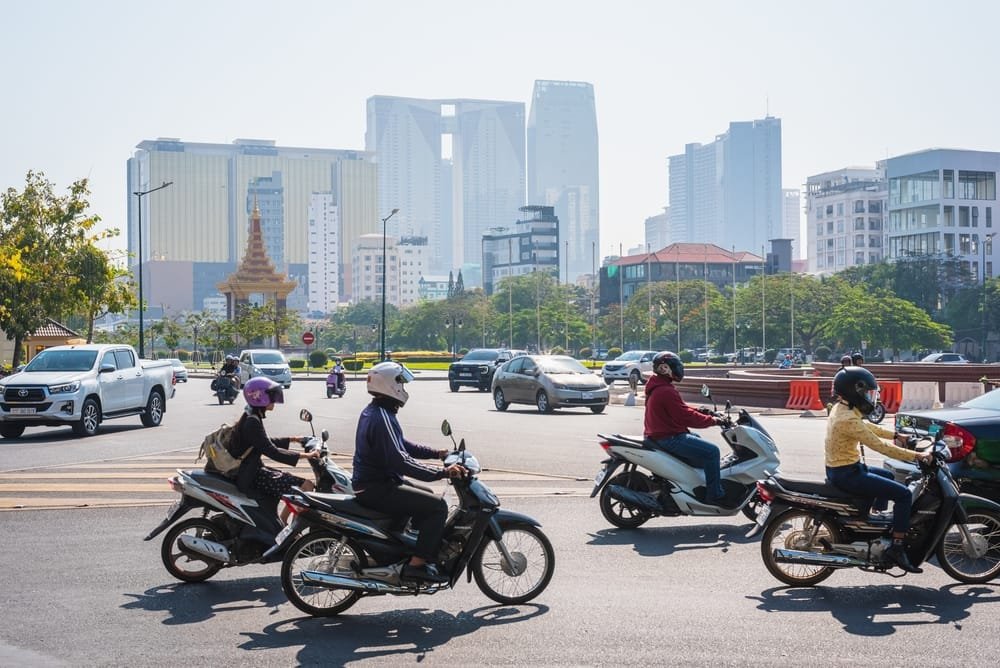The need for affordable housing in Cambodia is becoming more urgent as the country experiences rapid urbanization. Big cities like Phnom Penh are expanding quickly. And the focus is often placed on high-end residential developments that cater to foreign investors and wealthier locals. This leaves the urban poor, who make up a significant portion of the population, struggling to find affordable homes. With over 2.3 million people living in Phnom Penh, the lack of affordable housing is a growing concern.
The Struggle for Affordable Housing in Phnom Penh
According to Ronan Kemp from Sahmakum Teang Tnaut, a Cambodian urban NGO, Phnom Penh’s government has not adequately addressed the need for affordable housing. Much of the city’s real estate market is controlled by private developers, with luxury condominiums and high-end residential areas springing up across the city. This results in the marginalization of low-income families, who are priced out of these new developments.
One of the more visible effects of this exclusion is the rise of informal settlements. As Phnom Penh prioritizes high-end urban development, the poor are pushed to the outskirts, where housing is cheaper but often unsafe and lacking in basic services. The city’s urban strategy, which focuses on attracting foreign investment and beautification projects, further deepens the divide between the wealthy and the poor. As a result, many low-income families face the constant threat of eviction.
Government Initiatives for Affordable Housing
While the Cambodian government has made some efforts to address the housing crisis, the progress has been slow. According to the Ministry of Land Management, Urban Planning, and Construction, there are only five affordable housing projects approved in the entire country. Two are located in Phnom Penh.

One of the key projects, the Arakawa condominium project in the Sen Sok district, offers nearly 2,000 units at prices starting around $30,000. Another project, the Grand Park Housing Project in Por Senchey, plans to provide 200 units at similar price points.
Despite these initiatives, the number of affordable housing in Cambodia falls far short of the country’s needs. In 2017, the government set a target to build 55,000 affordable homes annually to meet the growing urban population, which is expected to reach 7.9 million by 2030. However, these ambitious goals remain largely unmet. By 2020, only a fraction of the proposed homes had been completed, and many low-income families continue to struggle with housing unaffordability.
Developers’ Reluctance and Financial Barriers
One of the main challenges for the affordable housing sector in Cambodia is the lack of interest from private developers. Many see the luxury real estate market as far more lucrative and avoid low-cost housing projects. While the 2017 National Program for Development of Affordable Housing offers incentives such as tax breaks and easier permit processes, the requirements for developers remain restrictive. For instance, projects of affordable housing in Cambodia must be within 20 kilometers of Phnom Penh or other cities. Additionally, the cost per unit must range between $15,000 and $30,000.
Moreover, financial risk is a significant concern for low-income families. Many households place themselves in precarious financial positions when acquiring housing loans, leading to over-indebtedness and further economic hardship. As a result, a large portion of the population is locked out of the housing market.
The Way Forward for Affordable Housing in Cambodia
To create a sustainable and inclusive housing market, the Cambodian government needs to strengthen its policies and work closely with private developers. One potential solution is to revise the existing affordable housing policies to make them more attractive to developers. This could include providing more substantial subsidies, reducing bureaucratic hurdles, and offering financial guarantees to encourage investment in low-cost housing projects.
While the demand for affordable housing in Cambodia continues to grow, the solutions must be multifaceted and inclusive. Only after that, then Cambodia can provide more opportunities for the urban poor to live in safe, affordable homes.
